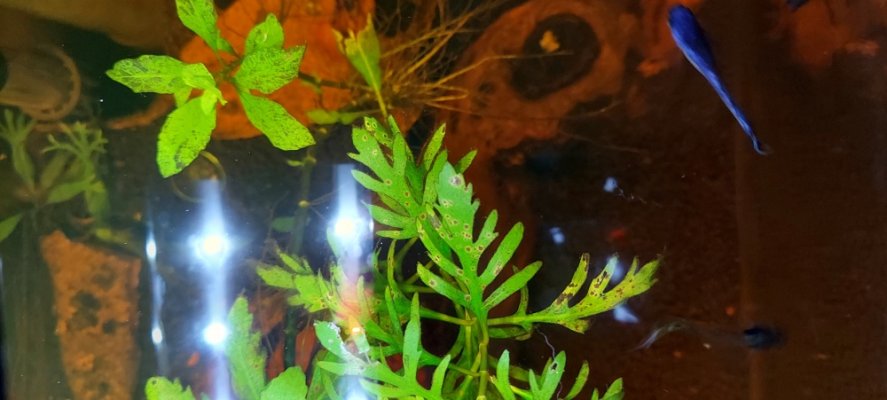Hi everyone. Hope you are well. First post here.
So I am pretty brand new to aquarium keeping. I've done research and such, but I'm learning there's nothing quite like experience.
That aside, I have been struggling with my plants dying. I added a CO2 bottle diffuser thing, but it leaked out overnight when I had closed it so I'm not trying that again. Instead, I've started using a liquid CO2 additive, and that seems to be helping my plants.
I do use a little bit of fertilizer occasionally, but I try not to add too much because I accidentally caused a hair algae bloom a while back. Oops.
My newest problem seems to be with my water wisteria (at least I think it is water wisteria). The leaves have developed brown spots with yellow rings around them. And some of leaves have semi transparent smears. I attached a photo of the leaves to help with diagnosing the issue.
Some additional info: my wisteria is not planted in the substrate. It just kind floats/is lightly anchored to a rock by its tangle of roots.
I also have 5 endlers, 3 Cory cats, and one assassin snail in the tank. Plus a couple java ferns and one tiny plant (size of a penny, don't remember the name).
So I am pretty brand new to aquarium keeping. I've done research and such, but I'm learning there's nothing quite like experience.
That aside, I have been struggling with my plants dying. I added a CO2 bottle diffuser thing, but it leaked out overnight when I had closed it so I'm not trying that again. Instead, I've started using a liquid CO2 additive, and that seems to be helping my plants.
I do use a little bit of fertilizer occasionally, but I try not to add too much because I accidentally caused a hair algae bloom a while back. Oops.
My newest problem seems to be with my water wisteria (at least I think it is water wisteria). The leaves have developed brown spots with yellow rings around them. And some of leaves have semi transparent smears. I attached a photo of the leaves to help with diagnosing the issue.
Some additional info: my wisteria is not planted in the substrate. It just kind floats/is lightly anchored to a rock by its tangle of roots.
I also have 5 endlers, 3 Cory cats, and one assassin snail in the tank. Plus a couple java ferns and one tiny plant (size of a penny, don't remember the name).

